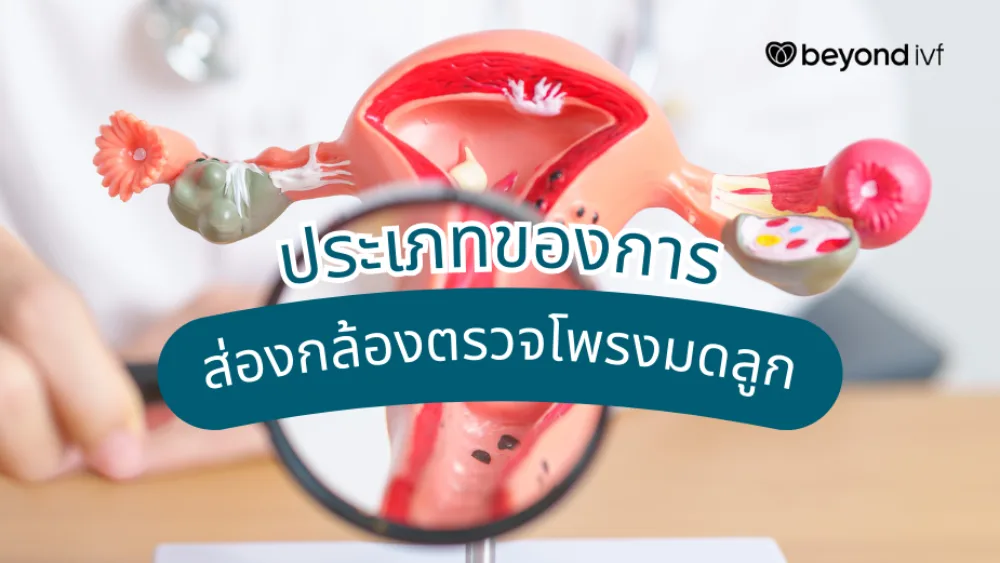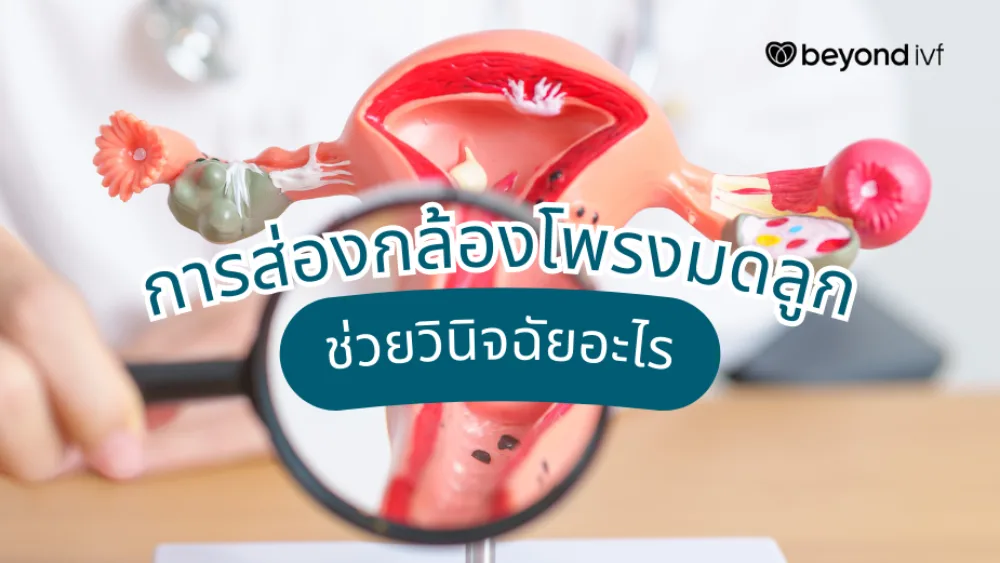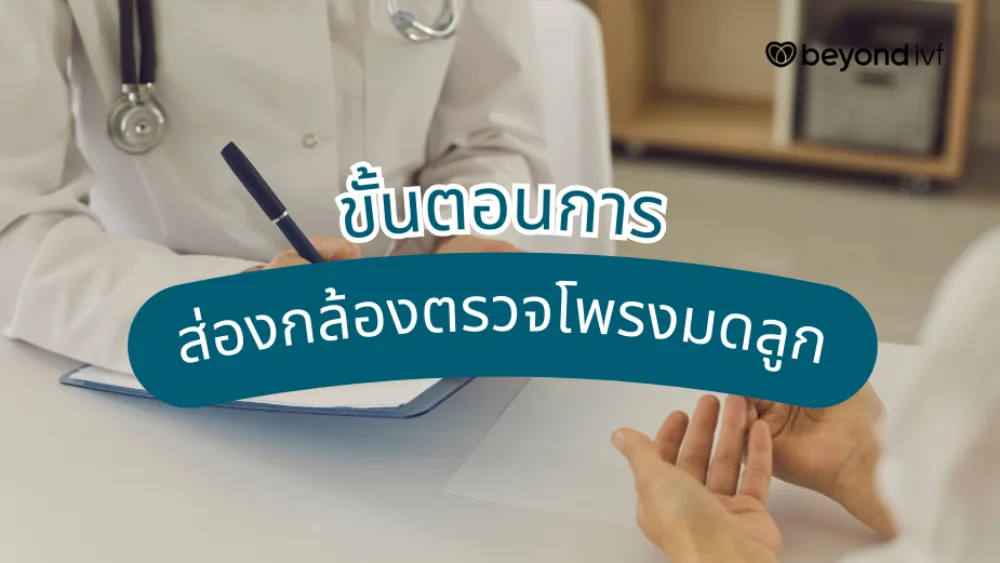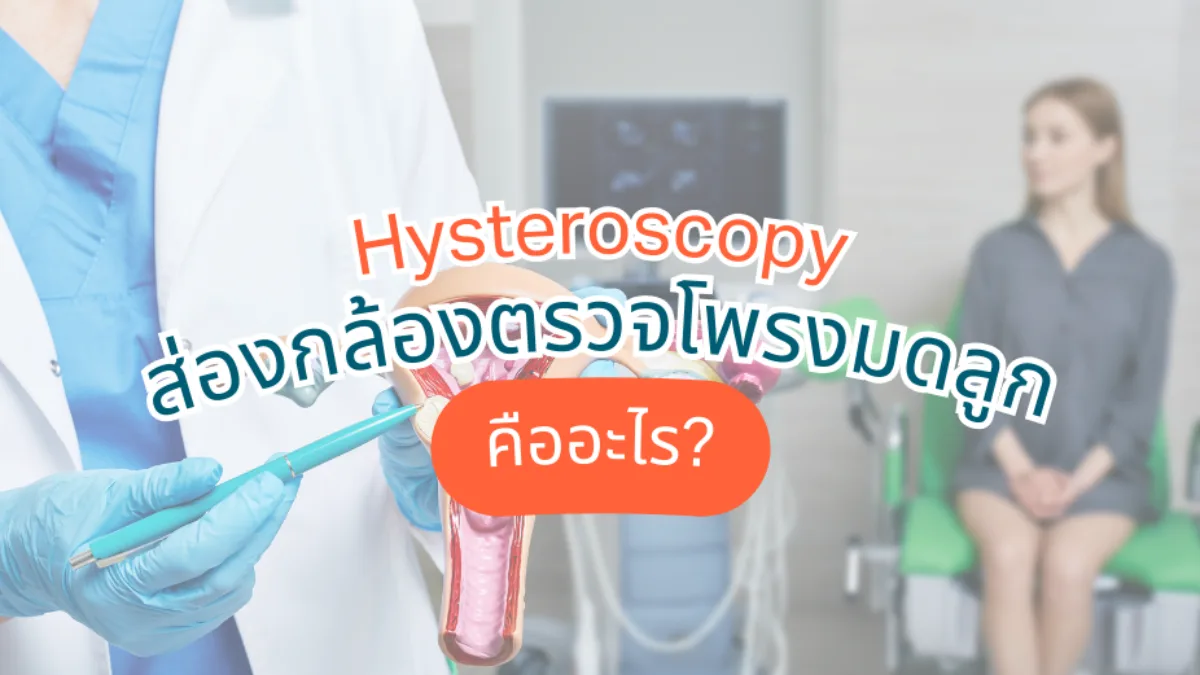Innovative Uterine Cavity Examination – What is Hysteroscopy?
Hysteroscopy is a procedure used to detect abnormalities inside the uterus. Many women may have never undergone a hysteroscopy before and may not be aware of its benefits and drawbacks, or how to properly prepare for the procedure. Additionally, questions may arise such as: What should you do if abnormalities are found? What are the next steps in treatment?
Hysteroscopy (Uterine Cavity Examination)
Hysteroscopy is a procedure that involves using a small camera inserted through the cervix to examine the inside of the uterine cavity. It allows doctors to directly view abnormalities within the uterus on a monitor. This method is particularly useful when conditions cannot be diagnosed through medical history, physical examination, ultrasound, or X-rays.
It can help detect issues such as abnormal menstrual bleeding, small polyps or fibroids within the uterine cavity, adhesions (scar tissue), uterine structural abnormalities, unexplained vaginal bleeding after menopause, and infertility-related conditions.

Types of Hysteroscopy
Diagnostic Hysteroscopy
Diagnostic hysteroscopy is used to detect abnormalities inside the uterine cavity. It is often recommended for women experiencing abnormal vaginal bleeding, recurrent miscarriage, or cases where abnormalities cannot be explained by basic tests such as ultrasound or hysterosalpingography.
Operative Hysteroscopy
Operative hysteroscopy is used when an abnormality has been detected within the uterine cavity and treatment is needed. This procedure may include:
-
Removal of polyps or fibroids within the uterus
-
Taking biopsies for further analysis
-
Removal of adhesions (scarring) in the uterus, which may result from previous infections or injuries
-
Sterilization (tubal ligation) in women
-
Removal of an intrauterine device (IUD) that is difficult to remove
-
Using electrical cautery to destroy uterine tissue in cases of heavy menstrual bleeding
Advantages of Hysteroscopy
-
The surgical incision is small, leaving minimal or no scarring on the abdomen.
-
Due to the small incision, post-operative pain is minimal.
-
Reduced risk of complications and adhesions.
-
Faster recovery time, saving time for the patient.
-
The doctor can clearly visualize abnormalities in the uterine cavity.
-
There is less chance of complications compared to traditional hysteroscopy.
Limitations of Hysteroscopy
-
Women with severe pelvic adhesions.
-
Women with large uterine fibroids.
-
Women who have had previous abdominal surgeries.
Who Should Consider Hysteroscopy?
-
Women of reproductive age experiencing abnormal menstrual cycles.
-
Women who have been diagnosed with uterine fibroids or polyps through ultrasound.
-
Women who experience vaginal bleeding post-menopause.
-
Women with uterine abnormalities, such as a septate uterus.
-
Women who have experienced recurrent miscarriages (two or more).
-
Women with fertility issues.
-
Women with very light or absent periods.
-
Women who have had a long-term IUD but cannot remove it.
-
Women with heavy menstrual bleeding.
-
Women who have failed to conceive after multiple IVF attempts with high-quality embryos.

Who Should Not Undergo Hysteroscopy
Hysteroscopy is not suitable for:
-
Individuals who are currently menstruating
-
Individuals who are pregnant
-
Individuals with pelvic or fallopian tube inflammation

What diseases can be diagnosed through hysteroscopy?
Hysteroscopy can help diagnose:
-
Abnormal bleeding from the uterine cavity.
-
Suspected polyps or fibroids in the uterine cavity, which were detected through other methods such as ultrasound.
-
Those at risk for uterine cancer, such as individuals with endometrial thickening or abnormal bleeding during menopause.
-
Infertility patients, suspected of having issues related to the uterine cavity.
Preparation before undergoing a hysteroscopy includes
To ensure the success of a laparoscopic surgery and avoid complications during and after the procedure, the following preparations are recommended:
-
Medical History and Physical Exam: The doctor will inquire about your medical history and perform a physical examination. Laboratory tests, such as blood tests, may be required. A chest X-ray is also common, and in some cases, an ECG may be done to assess your baseline health status and determine the surgical risk.
-
Specialist Consultation: If there are any abnormalities in the physical examination or lab results, your doctor may refer you to a specialist, such as a cardiologist, to assess your health further before surgery.
-
Anesthesia Consultation: A consultation with an anesthesiologist will be conducted to assess your suitability for anesthesia during the surgery.
-
Fasting: You will be asked to refrain from eating and drinking for at least 6 hours before the surgery.
-
Preparation for Surgery: You may need to undergo an enema and shave the pubic area about 2 hours before the surgery.
-
Avoid Alcohol and Smoking: Refrain from drinking alcohol or smoking for at least 2-4 weeks prior to the surgery.
-
Blood Thinner Medication: If you take blood-thinning medications, you should stop taking them at least 7 days before the surgery.

Steps for Hysteroscopy Procedure
Steps for Diagnostic Hysteroscopy:
Diagnostic hysteroscopy is similar to a pelvic exam. The patient will be asked to lie on an examination table in a position similar to that used for pelvic exams. A speculum will be inserted to view the cervix. Then, a small camera (hysteroscope) will be carefully inserted through the cervix into the uterine cavity to allow the doctor to examine any abnormalities inside the uterus. The procedure typically takes 10-15 minutes. In cases where abnormalities are found, the doctor may take a biopsy for further pathological examination, and a treatment plan may follow, which may extend the procedure time.
This diagnostic method is suitable for patients with abnormalities within the uterine cavity, such as suspected polyps or fibroids, unexplained abnormal bleeding, or to identify the cause of infertility, especially for women undergoing in-vitro fertilization (IVF). Doctors may perform this test before embryo transfer to ensure that the uterine cavity is free from abnormalities that could interfere with embryo implantation.
Generally, complications or side effects from hysteroscopy are rare, but can include pelvic infection, especially if the patient already has a pelvic or fallopian tube infection. Mild cramping may also occur, which can be treated with pain relief medication. After the procedure, patients can resume normal activities, but it is recommended to avoid sexual intercourse for about 3-5 days.
Steps for Operative Hysteroscopy:
The first important step in operative hysteroscopy is preparing the cervix for dilation to allow the insertion of the hysteroscope. The cervix typically needs to be softened and expanded to facilitate the procedure. If the cervix is not adequately prepared, there is a risk of uterine perforation.
Before the surgery, the doctor may administer local anesthesia or general anesthesia, depending on the complexity of the procedure. The cervix will be dilated to allow the camera and surgical instruments to be inserted into the uterus for examination and treatment of any abnormalities.
Once the abnormality is confirmed, surgical instruments will be used to remove polyps, fibroids, or adhesions, or a biopsy may be taken for further analysis.
Post-Hysteroscopy Care Instructions:
Post-Hysteroscopy Restrictions:
-
Avoid sexual intercourse.
-
Avoid swimming or soaking in water.
-
Avoid douching or using tampons for at least 2 weeks due to the risk of infection.
Self-Care After Hysteroscopy:
-
Light vaginal bleeding after the procedure is normal. Sometimes, tissue remnants from the surgery may be expelled from the uterine cavity, causing bleeding that can last for about 5-7 days.
-
Mild cramping in the lower abdomen may occur. Over-the-counter pain relievers like acetaminophen can help alleviate discomfort.
Conclusion:
Hysteroscopy is a delicate procedure that requires thorough consideration. It is not recommended to make the decision to undergo it based solely on information from the internet. It is crucial to consult with a physician for an initial evaluation to determine whether the procedure is suitable. Your doctor will provide more accurate advice and treatment recommendations based on your individual case. If you have any questions, feel free to contact us via Line: @beyondivf






